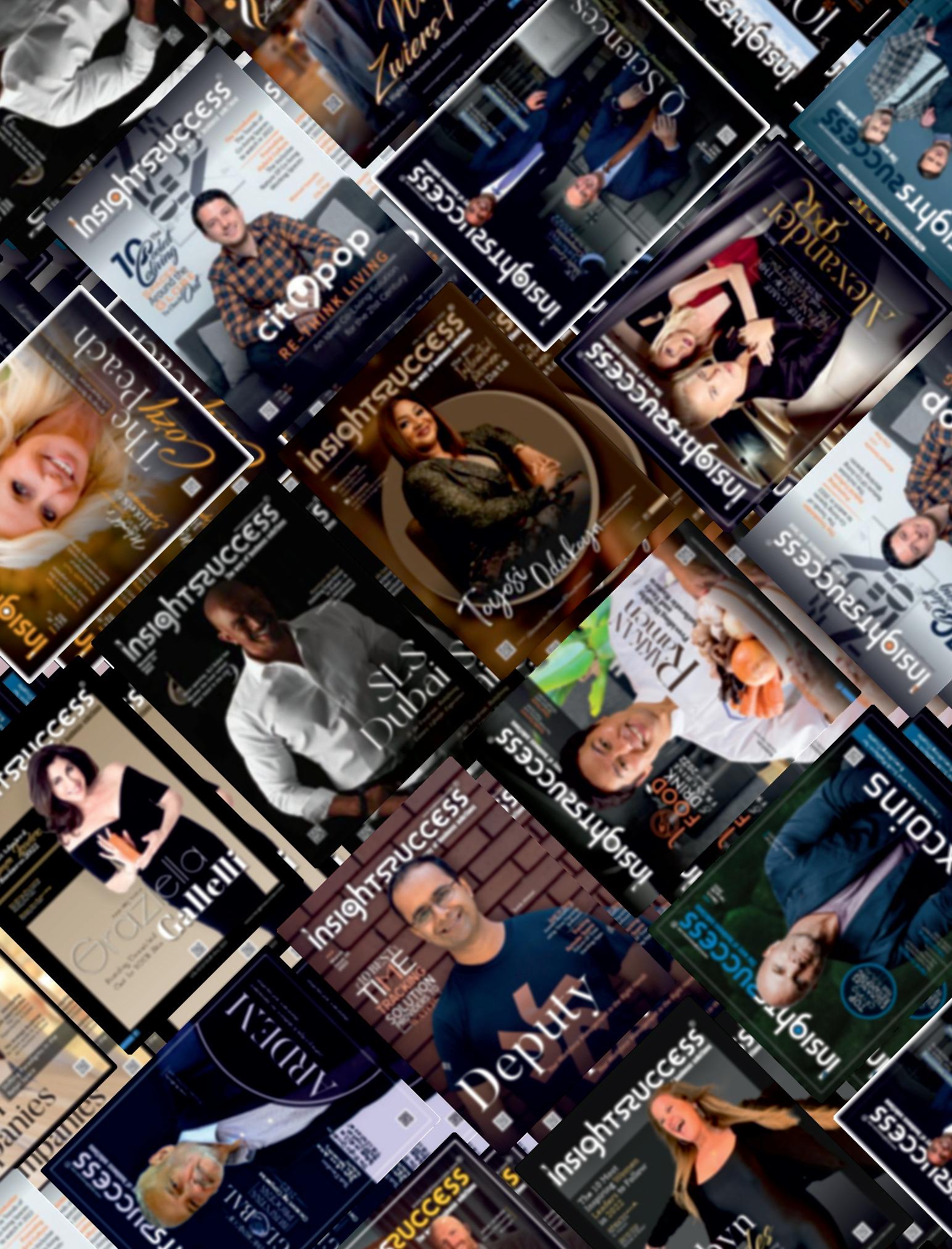DEVAKSHI CHANDRA



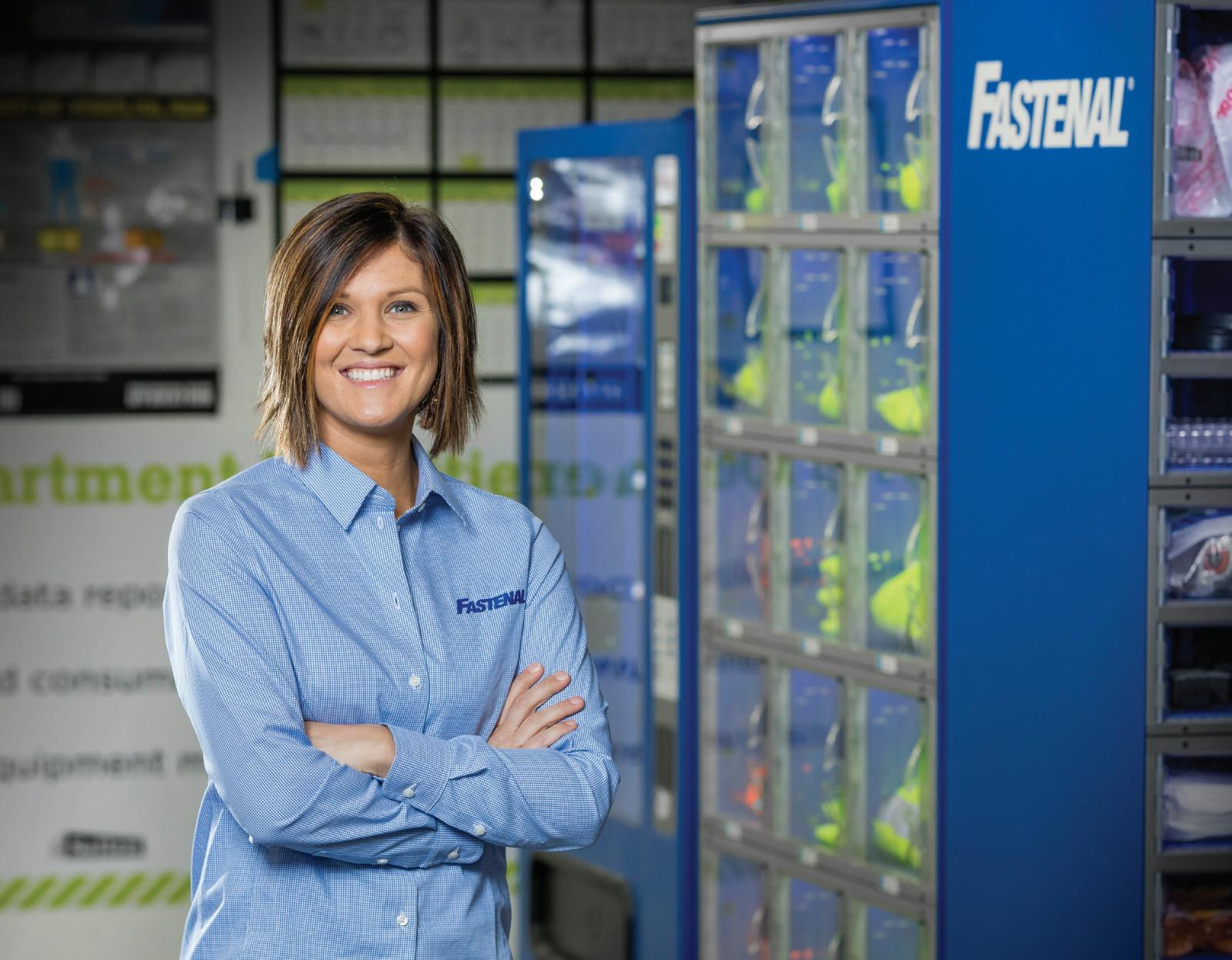
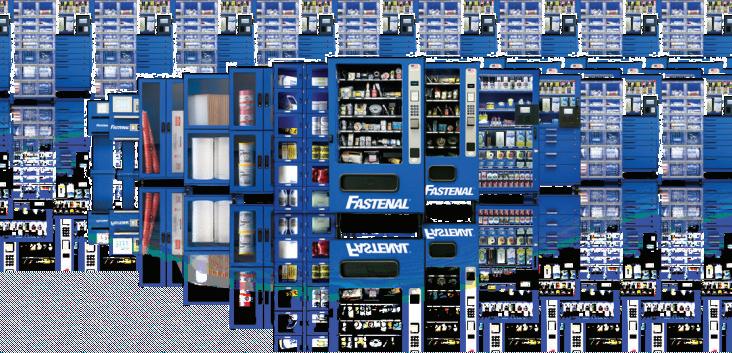
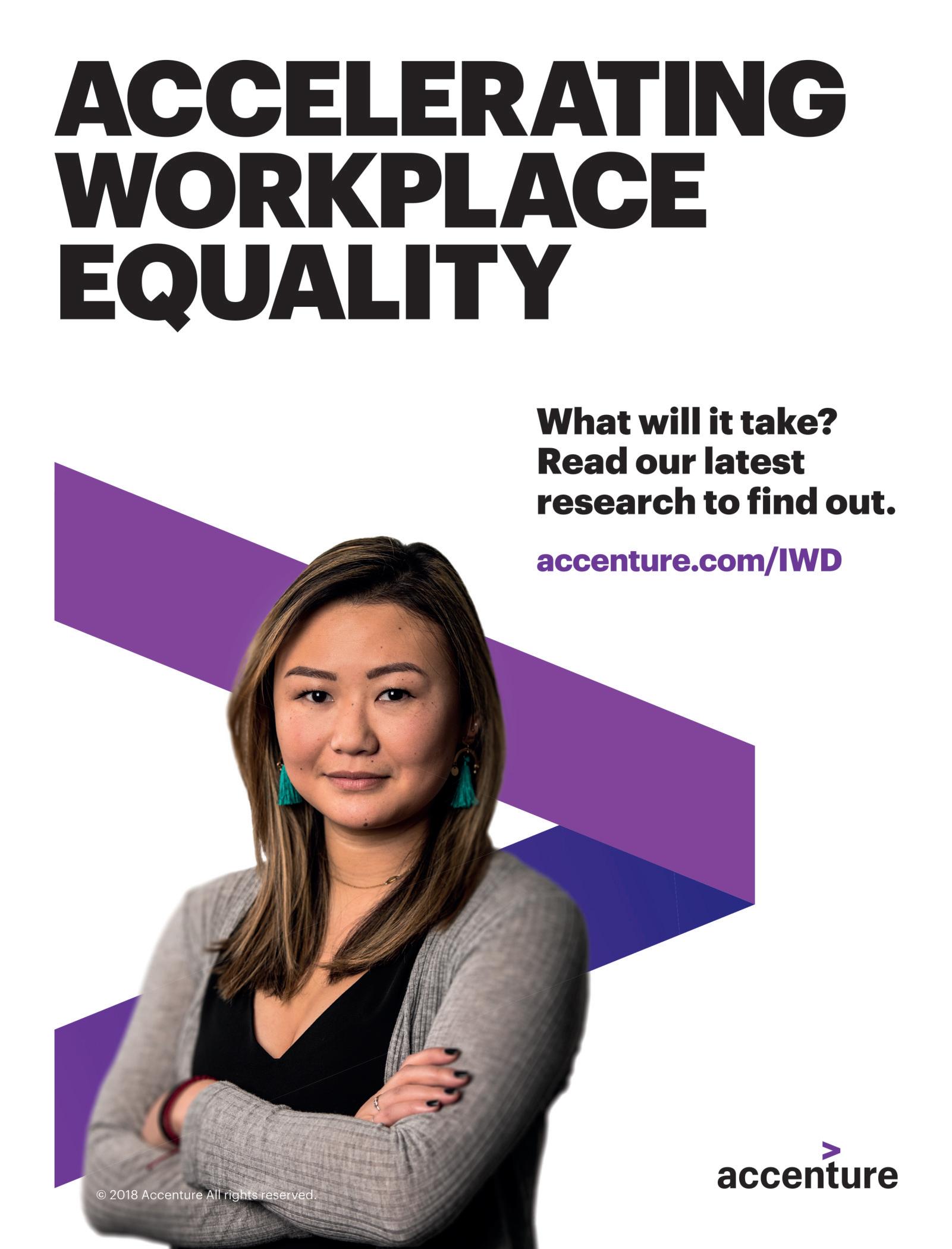











In a world shaped by rapid transformation and evolving
expectations, leadership is no longer defined by titles, but by vision, empathy, and the courage to inspire change This Insights Success edition of Empowering Leadership:VisionariestoWatchisatributetothosewhoare notjustnavigatingthepresentbutactivelyshapingthefuture withintegrity,authenticity,andpurpose.
Attheheartofthiseditionstands Devakshi Chandra name that resonates with empowerment, innovation, and quiet resilience. Her journey is not just a story of professional accomplishment;itisablueprintforimpactfulleadershipina world that seeks substance over spectacle. Her ability to balance strategic foresight with human connection, and vision with execution, positions her as a true modern-day changemaker
Whatsetsherapartisherintuitiveleadershipstyle,grounded inempathy,drivenbypurpose,andrefinedbyexperience.She representsaneweraofleaderswhoarenotafraidtoaskbold questions, challenge conventions, and uplift those around them.
Through the pages of this edition, you will encounter individualswhoechothesesamevalues—visionarieswhoare redefining success on their own terms.Their stories are rich withlessonsinperseverance,innovation,andtransformative leadership.
Asyoureadthroughtheinsightsandnarrativesthatunfoldin this edition, I encourage you to reflect on your own journey whereyouare,whatyoustandfor,andhowyoulead.Maythe stories within these pages serve as both a mirror and a catalyst—fueling your belief in the power of empowered, inclusiveleadership.
Here’s to those who dare to lead differently. Here’s to visionarieslikeDevakshiChandra.
HappyReading!

Devakshi Chandra’s Leading The Journey to Tomorrow’s Sustainable Polymers, Today F E A T U R I N G
Building Sustainable Growth Through People-First Leadership Principles
22
Measuring ROI in Manufacturing Transformation Initiatives

Business
Business


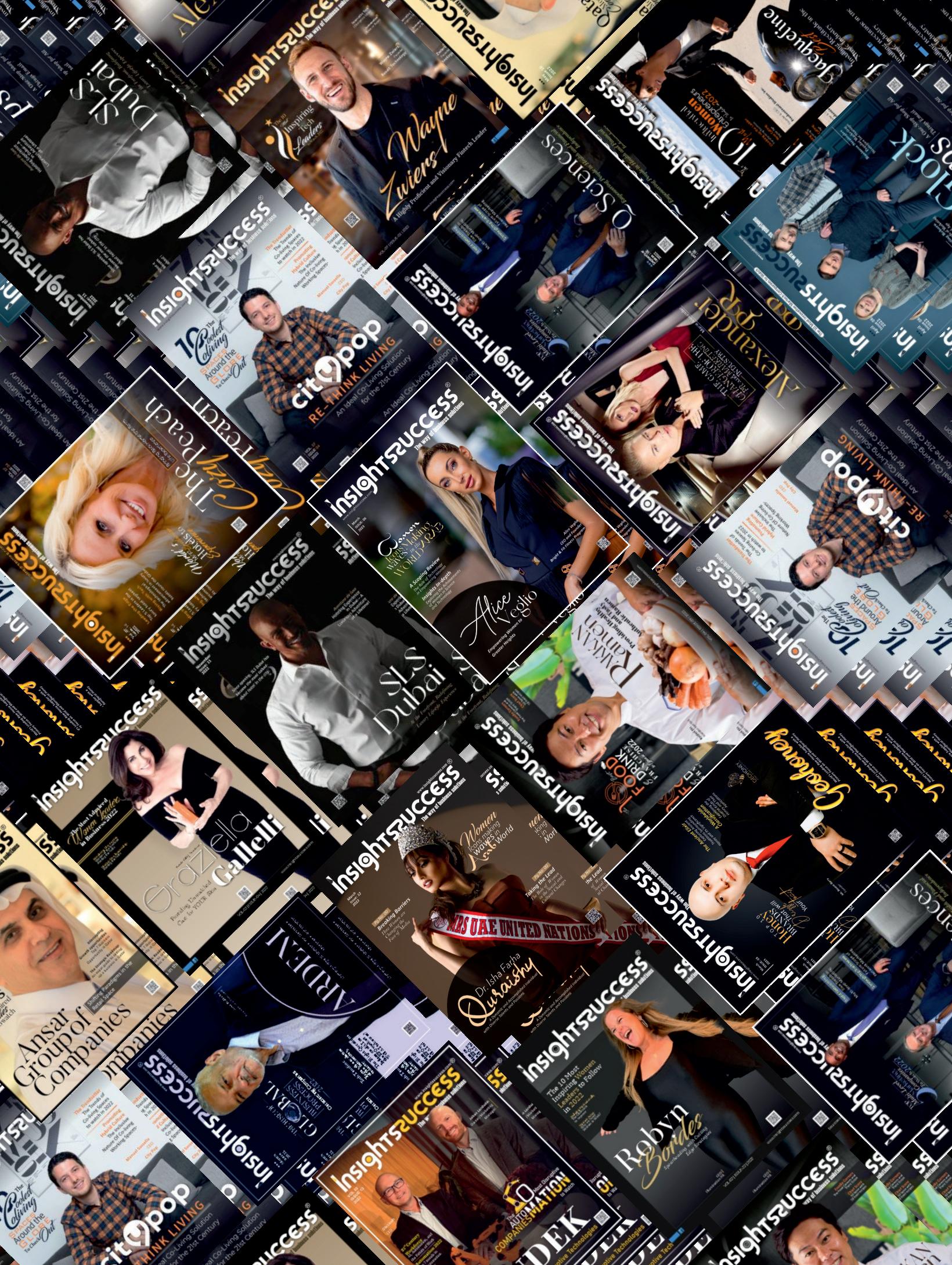








F E A T U








n an era where leadership is often defined by quarterly targets and market shares, Devakshi Chandra stands out for a refreshingly human approach one that bridges purposewithperformance.Herjourney,whichbeganamidst theprecisionofEYandinvestmentbanking,hasevolvedfar beyond balance sheets. It found deeper resonance when she transitioned into her family’s FIBC manufacturing business, Nanofil,whereshediscoveredthattrueleadershipthrivesnot in corner offices but on the shop floor, among people and processes.
Chandra’s leadership is distinguished by a rare blend of analyticalrigorandemotionalintelligence.Fromnavigating midnight crises shoulder-to-shoulder with frontline workers to championing inclusive workspaces in a male-dominated industry,shehasconsistentlychosendepthoverdisplay.Her decisions are like pivoting recycled materials before sustainabilitybecamemainstreamreflectaleaderguidednot justbystrategybutbyconviction.
Underherstewardship,Nanofilhasanembracingculturethat values both innovation and accountability She is fostering environments where experimentation is encouraged, providedit’srootedinownershipandimpact.Herpeople-first philosophy is not merely a management style it’s a transformative force that fuels growth, inspires loyalty, and buildslegacies.
In today’s rapidly evolving business landscape, Devakshi Chandra represents a new generation of leaders those who understandthatempathyandempowermentarenotsoftskills, butstrategicimperatives.Asshecontinuestoshapethefuture of sustainable manufacturing, her leadership is serving as a compellingreminder:trueprogressbeginswhenleaderslead notjustwithminds,butwithpurpose-drivenhearts.
Chandra's professional journey began in the structured corridorsofEYandinvestmentbanking,whereshehonedher analytical skills and strategic thinking. However, it was her transitionintoherfamily'sFIBCmanufacturingbusinessthat trulyignitedherpassionfortransformationalleadership.
"Initially, I stepped in to manage the numbers, but I found myself deeply drawn to the heart of the operations: the shop floor Watchingrawmaterialtransformintoproduct,listening to the rhythm of machines, and understanding the challenges offrontlineteamsgavemeawholenewlens."sheexplains,

"True leadership isn't about taking the spotlight – it's about using your light to lift others. As women, we lead not just with strength, but with sensitivity, and that's where real transformation begins.”
This shift from spreadsheets to shop floors wasn't just about changing roles it was about discovering her authentic leadership voice. The experience taught her that effective leadershiprequiresmorethanfinancialacumen;itdemandsa deepunderstandingofpeople,processes,andpurpose.
Thetransformationwasn'timmediate.Thatpivotalmidnight crisis became her leadership awakening Rather than managing from a distance, she chose to embed herself with her team, learning every bottleneck, understanding every challenge. This hands-on approach would later become the cornerstone of her participative and empathetic leadership style.
AtthecoreofChandra'sleadershipphilosophyliesasimple yet powerful belief: "people first, always." This isn't just corporaterhetoric–it'sastrategicframeworkthathasguided everymajordecisionthroughouthertenure.



"I've learned over the years that no strategy, no matter how brilliant, can succeed without the right people empowered to execute it. Leadership, to me, is about creating environments where individuals feel seen, heard, and valued. When people feel safe and inspired, they naturally bring their best to the table.”sheemphasizes
This philosophy has evolved through both triumphs and setbacks. She has witnessed firsthand how the strength and commitmentofpeoplecarryorganizationsthroughcrises,and how collective spirit sustains momentum during growth phases.Herleadershipapproachhasshiftedfromtask-driven managementtopeople-ledinspiration,recognizingempathy, trust,andopencommunicationasstrategicassetsratherthan meresoftskills.
AtNanofil,thistranslatesintotangiblepractices.sheensures teamfeedbacktranslatesintoaction,practicesactivelistening in leadership meetings, and never underestimates the power of small check-ins, especially during challenging quarters.
"Balancing hard metrics with soft skills isn't always easy, but it's what builds high-performance cultures that last.” she admits,
BreakingBarriers,BuildingBridges
Asawomaninatraditionallymale-dominatedmanufacturing sector,Chandrahasfaceduniquechallengesthathaveshaped herinclusiveleadershipapproach.Sherecallsbeingtheonly woman in boardrooms or the youngest voice in meetings, experienceswhereshewasn'talwaysheardthefirsttime.


“I've learned over the years that no strategy, no matter how brilliant, can succeed without the right people empowered to execute it. Leadership, to me, is about creating environments where individuals feel seen, heard, and valued. When people feel safe and inspired, they naturally bring their best to the table.”

"I had to learn not to speak louder, but to speak with greater conviction and clarity." shereflects.Theseexperiencesdidn't embitterher;instead,theystrengthenedherresolvetocreate moreinclusiveenvironmentsforothers.
Rather than simply climbing the ladder, she has focused on buildingbridgesforthosewhofollow Shedoesn'tmentorby giving advice alone; instead, she creates spaces where all voicesespeciallyquieteronesareheard.Hercommitmentto championing women within the organization reflects her understandingthatdiversityisn'tjustaboutrepresentation;it's aboutinclusionthatbeginsatthetop.
UnderChandra'sleadership,Nanofilhascultivatedaculture where innovation thrives alongside accountability. Her approach recognizes that breakthrough ideas can emerge fromanyleveloftheorganizationevenfromR&Dlabstothe shopfloortologisticsoperations.
"We encourage a culture where experimentation is welcome as long as it comes with responsibility," she explains. The frameworkisclear:definetheimpact,setboundaries,andtake ownership. This structured approach to innovation ensures thatcreativitydoesn'tcomeattheexpenseofaccountability.
Transparency plays a crucial role in this ecosystem Dashboards, daily briefings, and cross-functional reviews keep teams aligned, while revisiting the organization's core purpose – their "why" – fuels both innovation and accountabilityduringhigh-pressuresituations.
Perhaps no decision better exemplifies Chandra's valuesdriven leadership than her choice to pivot part of Nanofil's production capacity towards post-consumer recycled materialsatatimewhentheyweren’tyetmainstreamintheir market. The decision came with financial risk, internal pushback,anduncertainclientadoption.
"But deep down, I knew it aligned with our long-term vision. Thatdecisiontestedeverybitofmyresilience,butintheend,it paidoff.Ittaughtmethatleadershipsometimesmeansbetting onvaluesbeforevalidation."sherecalls.
This decision reflects her understanding that responsibility includes staying true to your mission, even when the path is unclear It also demonstrates her ability to see beyond immediatechallengestolong-termopportunities,particularly inthegrowingsustainablemanufacturingspace.
Looking toward the future, Chandra identifies two critical qualities that will define the next generation of successful business leaders: AI expertise and empathy "The future of leadership will belong to those who can bridge the gap betweentechnologyandhumanity."shepredicts.
SheemphasizesthatAIisnolongeroptionalbutfoundational for leaders, not just as an efficient tool but as a driver of innovation, personalization, and sustainable growth Simultaneously, the rise of automation makes emotional intelligence even more critical for connecting with and inspiringhumanteamsinadigital-firstworld.
AtNanofil,thisdualfocustranslatesintoupskillingteamsin data-drivendecision-makingandAIreadinesswhilefostering a culture that prioritizes mental well-being, listening, and inclusion. "We want our people to not only adapt to the future butleadit,"Chandrastates.
StayingGroundedinHigh-StakesLeadership
Amid the demands of executive leadership, Chandra maintains her authenticity through two simple practices: reflection and perspective. Her mornings begin with weight trainingandtimeatthegym,ritualsthatstrengthennotjusther body, but her mentalclarityand focus. Equallygrounding is thetimeshespendswithherdaughter,momentsthatbringjoy, andadeepsenseofpurpose.


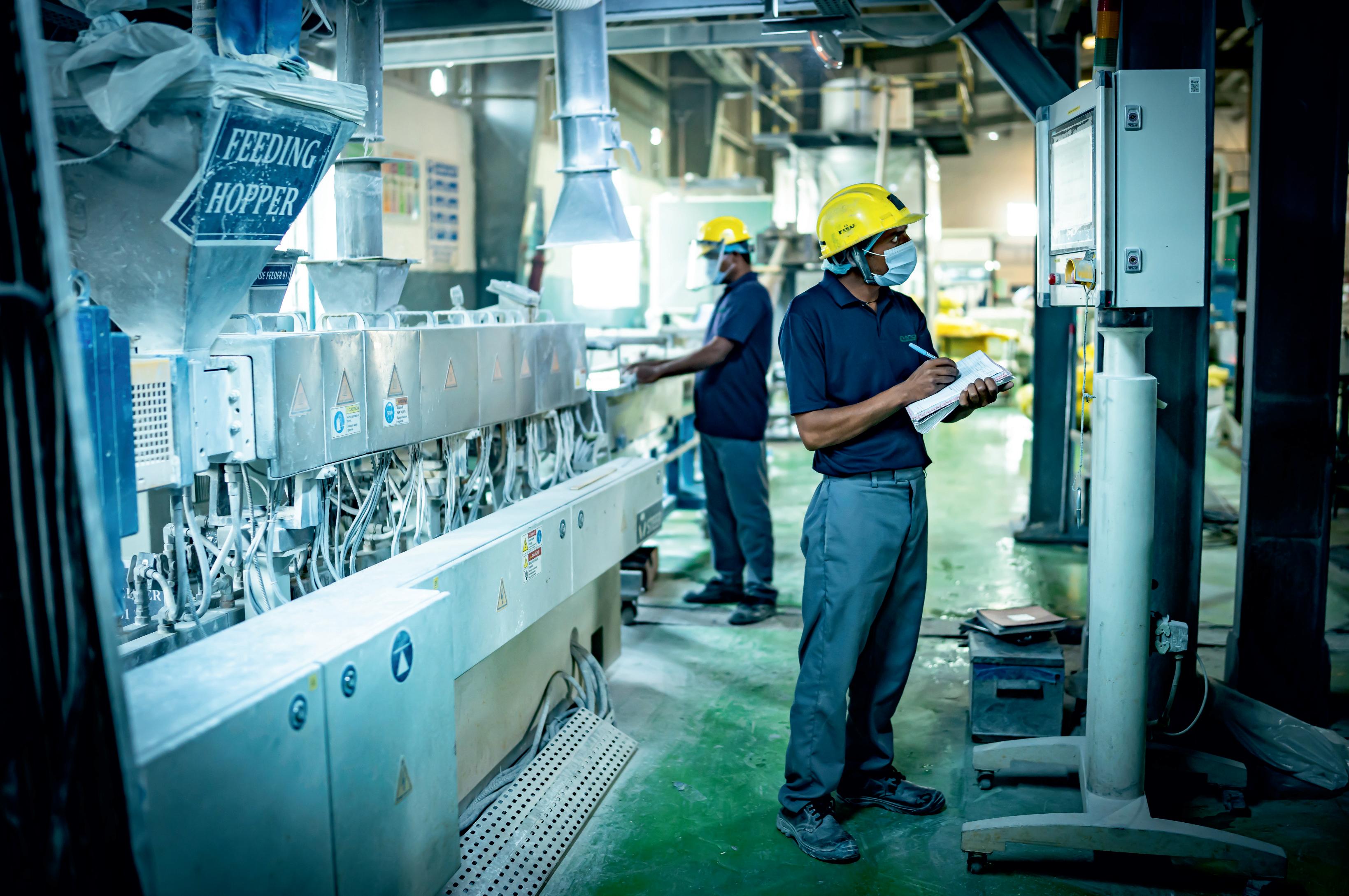



"Initially, I stepped in to manage the numbers, but I found myself deeply drawn to the heart of the operations: the shop floor.
Watching raw material transform into product, listening to the rhythm of machines, and understanding the challenges of frontline teams gave me a whole new lens.”

She also stays connected to the ground level, regularly visiting the shop floor and talking with teams to see the real impact of decisions. This human connection provides both motivation and grounding, reminding her why her work mattersbeyondtheboardroom.
Herpersonalphilosophyof"progress,notperfection"serves as a constant reminder to keep moving forward, even on challengingdays.Thismindsetreflectsherunderstandingthat leadershipisajourneyofcontinuouslearningandadaptation.
Chandra's impact extends beyond Nanofil's operations through initiatives like the scholarship program for underprivileged girls' education. This wasn't merely a CSR activity but a personal conviction rooted in the belief that educationtransformsfutures,especiallyforgirlswhoaretoo oftendeniedopportunities.
Theinitiativecreatedaculturalshiftwithintheorganization, inspiringteammemberstocontributepersonallyandmentor students. That moment reminded her that when they align purposewithaction,theydon'tjustbuildcompanieswebuild legacies.
When asked what advice she would give her younger self, Chandra's response encapsulates her leadership philosophy: "True leadership isn't about taking the spotlight – it's about usingyourlighttoliftothers.

As women, we lead not just with strength, but with sensitivity, andthat'swhererealtransformationbegins."
Hermessagecontinues: "Trust your instincts. Embrace your voice. And remember: even the softest steps can leave the deepestimpact."
AsDevakshiChandracontinuestoleadNanofilintoaneraof sustainablemanufacturingandinclusivegrowth,herjourney isservingasablueprintforauthenticleadershipinthemodern business landscape. Her story demonstrates that the most effective leaders are those who remain connected to their values,theirpeople,andtheirpurpose.
Inaworldincreasinglyfocusedonquickwinsandshort-term metrics, she is people-first approach offers a refreshing alternativeonethatbuildsnotjustsuccessfulbusinesses,but meaningful legacies. Her leadership philosophy proves that when you lead with authenticity, empathy, and conviction, you don't just manage operations; you transform your lives andcreatelastingimpact.
Through her example, Devakshi Chandra shows us that the future of leadership lies not in choosing between humanity and business success, but in understanding that they are inextricably linked. In doing so, she continues to redefine whatitmeanstobealeaderinthe21stcentury










n an era of rapid innovation, relentless disruption, and
speed-of-change, there has been one enduring reality across the ages: people-first companies make the best long-term foundation for success. Long-term success does not result from high-tech schemes or piles of money invested—it results from a source where people are valued, empowered, and encouraged. The key to this potential is a high-impact,human-drivenstrategy:people-firstleadership.
WhatisPeople-FirstLeadership?
People-first leadership is a management style that puts employees in the middle of making decisions, running operations, and formulating strategy It diverges from conventional hierarchical philosophy in favor of a more compassionate, participative, and empowering approach to leadership.
This mindset acknowledges that each process, product, and performance measure has human beings behind human beingswithideas,hopes,families,andobstacles.Asopposed to viewing employees as assets to be leveraged, people-first leaders see employees as complete human beings whose welfareanddevelopmentdirectlytranslatetothehealthofthe organization.
This kind of leadership never compromises on results; it maximizes them. With workers motivated and empowered, they automatically bring more meat to the table. They own, theycollaboratefreely,anddriveinnovationallkeytolongtermbusinesssuccess.
WhyPeople-FirstLeadershipMattersNow?
Today'sworkforceischanging.Workersnolongerwantonly apaycheck;theywantpurpose,belonging,andtheabilityto
learn.The COVID-19 pandemic, then the great resignations and work model shifts, highlighted it beyond a shadow of a doubt that companies can no longer afford to neglect the humanaspectofbusiness.
People-firstleadershipmeetsthischangebydesigningspaces in which flexibility, mental health, work-life blending, and trust are no longer fringe benefits, but requirements. It's a reactiontotheincreasingneedforaworkplacewithsoul.And the dividend is quantifiable. Organizations that implement people-first leadership will end up with happier workers, reducedturnover,andincreasedprofitabilityinthelongrun.
Butthestatisticsabove,theimpactisonanemotionalplanet. Peoplearenoticing.Theyareheard.Theysensethattheyare partofsomethinggreaterthanthemselves.
CorePrinciplesThatDrivePeople-FirstLeadership
One of the most unique characteristics of people-first leadership is empathy. Listen, hard-listening leaders who resonate with their people at a human level create stronger relationships and greater trust. It's not soft, it's humanity Leadership empathy enables wise decisions, healthier work relationships,andasupport-orientedculturewhereeveryone feelssafetolendtheirvoice.
Transparencyandtrustisanotheressentialpillar.People-first leadershavenoproblembeinghonest.Theytakeproblemsto theirteamsandchallengethemtofixthemratherthanoffering orders at the top. This openness builds a sense of shared ownership and accountability with success celebrated in commonandeffectivemanagementofdisagreement.
Autonomy matters as well. When employees are free to do anddecide,theybuildcapacityandconfidence.


People-first leaders understand that micromanaging crushes creativity and motivation. Rather, they offer direction, clear guidance,andthengetoutofthewayfortheirteamstothrive.
Andperhapsmostsignificantly,people-firstleadersinvestin thegrowthofotherpeople.Theyinvesttimeinlisteninglong enoughtolearnwhateachmemberoftheirteams’desiresto accomplishandassistincreatinggrowthpathsthatalignwith both the individual's aspirations and the needs of the company This dual investment professional and personal is whereengagementandretentionflourish.
People-first leadership is not perfect—it is about integrity Leaderswhohaveintegrityintheirownvulnerabilities,who screwupandownit,andwhodowhattheybelieveeveryday gaintrust.Honestleadershipencouragesteamwork,createsa sense of psychological safety, and results in more solid workingrelationships.
Whenpeopleobservethattheirleadersarealsohumanbeings, they begin to build a culture where vulnerability is strength, notweakness.Thisestablishesopencommunication,eclectic views,andgreatleaps.
Tomakepeople-firstleadershipstick,itneedstotranscendthe individuals and become part of the organizational culture. It beginswithunderstandingandchanginghowfirmshire,train, communicate, and reward Policies need to express inclusiveness, flexibility, and fairness. Systems need to be built that empower workers more and create equality of opportunity.
One of the most effective strategies is creating space for feedback and responding to it. When employeesfeeltheirfeedbackleadstoaction,they become more invested and committed. Likewise, acknowledging triumphs professionally and personalremindspeopleoftheirworkmatters.
Culture-buildingtakesplacedayinanddayout,not as a one-time effort. But when people-first leadership values are lived daily from the boardroom to the breakroom the results speak for themselves.
There is a wonderful example of people-first leadership in practiceinamedium-sizedhealth-carefirmthatusedtohave high turnover and low morale. Leadership was bold: they didn't restructure teams or redo technology but centered on theirpeople.
Theystartedopenlisteningsessions,promotedflexiblehours, andredesignedtheirinternalrewardsystems.Managerswere educated in emotional intelligence and respectful communication. The changes were easy, but the effect was breathtaking. In one-year, turnover rates started to change, and team performance soared More importantly, the company was a company to work for because people felt valued.
At its essence, people-first leadership is not a strategy it's a promise.Apromisetocreateorganizationsthathonorpeople, shareleadership,andgrowththatnotonlylastsbutisworthit.
Asbusinessesmoveforwardintothefuture,onethingissure: peoplewillalwaysbethesparkofinnovation.Byleaninginto people-first leadership, businesses aren't investing in the now—they're building a vibrant, empowered, and thriving tomorrow.












As businesses across the globe shift towards smarter,
faster, and more sustainable methods of manufacturing, the phrase manufacturing transformation has traveled from boardroom jargon to business reality Industries across industries are adopting automation, artificial intelligence, IoT, and analytics as they attempt to transform processes and stay competitive in a rapidly changing digital age. But as it gets normalized, a nagging question still haunts executives and stakeholders: Whatisthereturnoninvestment?
Manufacturing transformation is beyond putting in new equipment or going digital It's an intimate, strategic rethinking of how to design, make, and deliver This transformation permeates every corner from the work process of employees and machine capacity to customer satisfaction and supply chain responsiveness. The ROI is difficulttoquantify,butcrucial.
RedefiningTransformationinToday'sFactory
At its essence, manufacturing change is a corporate-wide efforttorethinkoperationsthroughdigitalinnovation.Itcan involve forsaking legacy platforms in favor of smart, networked platforms, adding robotics to the shop floor, or developingdata-baseddecision-makingsystems.Forothers, transformation is motivated by removing waste and pushing efficiencies.Forothers,it'smeetingsustainabilityimperatives ortailoringproductstochangingcustomerdemands.
Regardlessofthemotivation,thetrueintentionisapparent:to build smarter, more responsive plants that return more businessvalue.
Factory transformation is a high-cost investment time, money,andintellect.Ittakesenormousamountsofmoneyto initiate it, typically including capital spending, system integration, training personnel, and process re-engineering. Thus, ROI remains the key gauge of success or failure of transformation.
But when it comes to measuring ROI on transformation projects,it'snotalwaysallaboutdollars.Whilecostreduction and production growth are included, much of the real value —suchasimprovedaccuracywithdata,increasedemployee engagement, or shorter cycles for innovation—is harder to measure,butdeep.
To best calculate ROI in manufacturing transformation, organizationsneedtoconsiderbothdirectandindirectresults.
Operational effectiveness is perhaps the most significant indicator These companies that invest in smart sensors, predictivemaintenance,orAI-drivenanalyticsaremostlikely to enjoy lower maintenance expenditure and machine downtime.
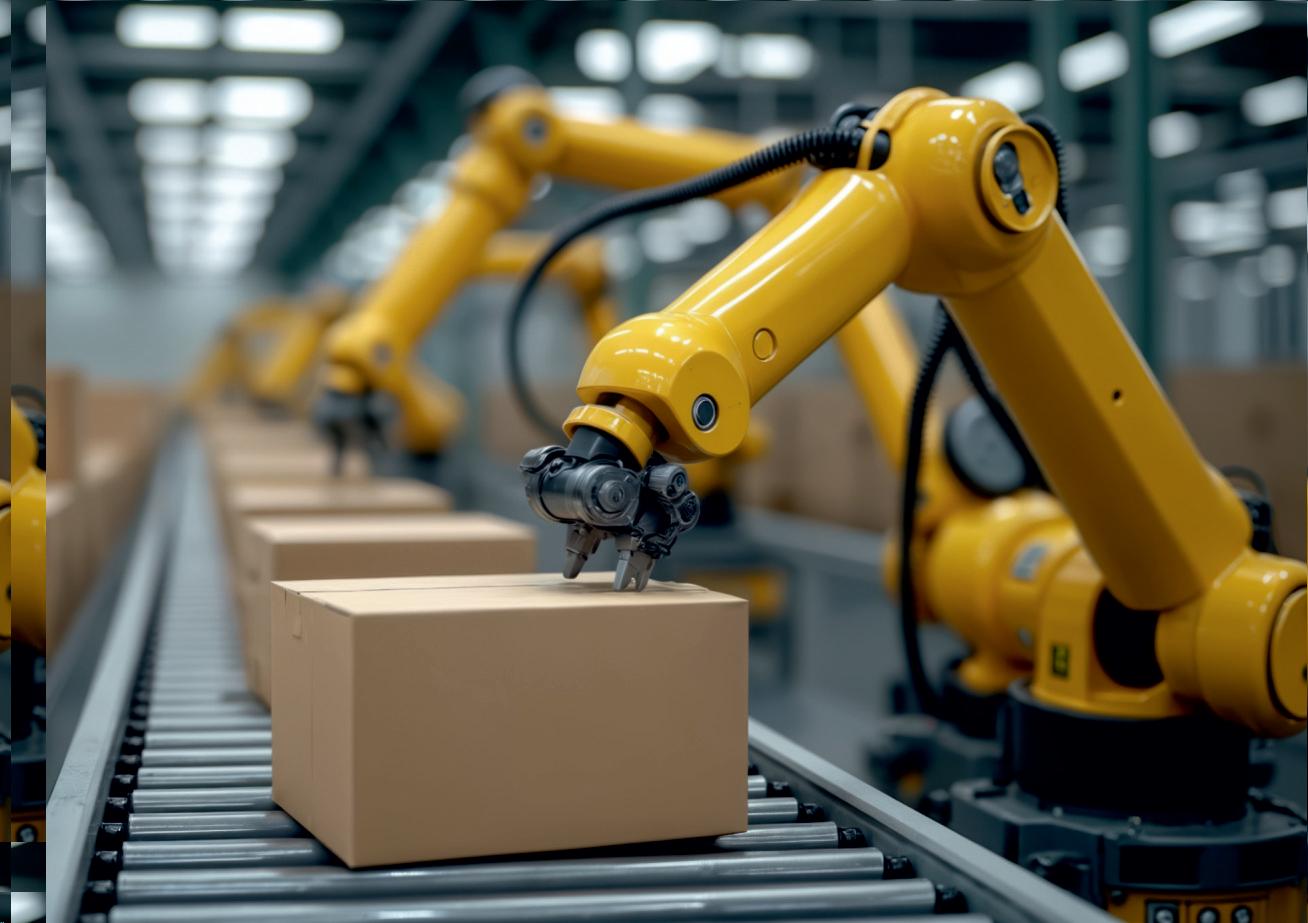
This all contributes to more uptime, improved throughput, and ultimately, lowerproductioncost.
Reduced costs, particularly in energy consumption,rawmaterialuse,andlabor, isaquantifiableadvantage.Organizations embracingleanmanufacturingparadigms with digital empowerment generally discover that minor process transparency improvements result in tremendous longtermcostsavings.
Product quality improvements are also crucial. Through the utilization of realtime information and automated inspection equipment, manufacturers can eliminate defects, eliminate rework, and increase customer satisfaction. A quality reputationnotonlykeepscustomers,butit alsooffersnewmarkets.
Maybe the most underappreciated element of ROI is workforce productivity. When workers are empowered with easy-to-usedigitaltechnology,theycandomoreworkinless time, communicate more efficiently with each other, and concentrate on higher-value tasks Done correctly, transformation can enhance morale, decrease turnover, and createamoreinnovativeworkplaceculture.
Speed to market is a reliable sign as well. Manufacturing transformation allows businesses to react more quickly to changes in demand, produce products more easily and effectively tailored, and introduce new products to market moreeffectively Thisreactionimpactsthemarketshareand loyaltytothefirmdirectly
Success starts with definition. Leadership must create specific, quantifiable objectives as the beginning of any change effort. Do they wish to cut lead times by 20%? Cut energy use by a third? Get product to customers more accurately?Theseobjectivesmustbewrittendownandlinked toKPIs.
Developing a good baseline is just as important. Without understanding where the company stands prior to transformation, it will be impossible to assess progress.
Referencing earlier data versus after-implementation results cangivevaluableinformationonwhatisoperatingwelland whereitmustgetbetter
Technology also proves useful in measurement. Real-time dashboards,IoTplatforms,anddataanalyticstoolscanenable tracking of performance, recognition of trends, and annotationofareasthatneedtobeadjusted.Notonlydothey enable continuous improvement but also enable teams to makerapiddata-drivendecisions.
Lastly,leadersneedtobeabletoseebeyondthenumbers.Soft benefits such as stronger supply relationships, greater compliance readiness, and enhanced innovation capability—are not found on a balance sheet but are all importantelementsofenduringsuccess.
Consider the example of a local electronics company that installed cloud-based inventory management and automated production lines. During year one, they were realizing only incremental improvements in output Within two years, however, they had reduced order fulfillment time by 35%, lessenedproductreturnsfordefects,andpenetratedtwonew markets overseas. Their ROI did not occur overnight, but it wassignificantandenduring.
What set them apart was measurement over the long term. They tracked KPIs intensively, spent money on training employees, and kept evolving their approach—all with the customer'srequirementsparamount.
Last Thoughts: Seeing ROI as a Journey, Rather than a Destination
Manufacturing transformation is a marathon, not a sprint. Even if shortly, any immediate quick wins in store, the greatest payoffs are typically off in the distance. Still, the dangerofdoingnothingfaroutweighsthecostofinvestment.
Intoday'scompetitiveworld,it'sthecompaniesthatadaptthat end up succeeding. ROI measurement is not about simply defending the cost—it's about aligning investments with strategic objectives and realizing the full value of digital innovation. By embracing ROI as a continuous process, organizations can make certain that their factory transformation initiatives realize lasting value for the organization,itspeople,andthecustomerstheyserve.

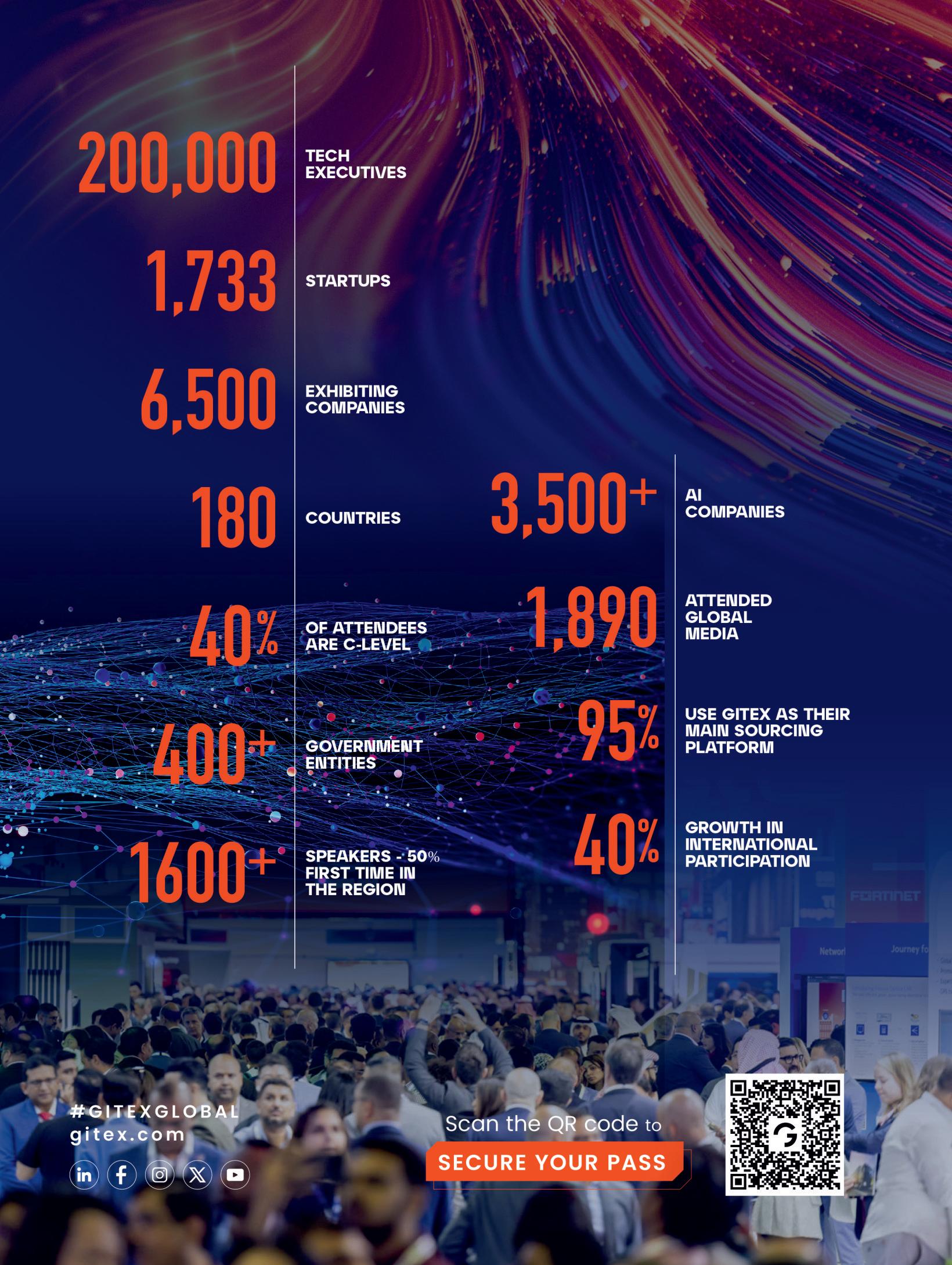



For Subscrip�on: www.insightssuccessmagazine.com
www.x.com/insightssuccess

